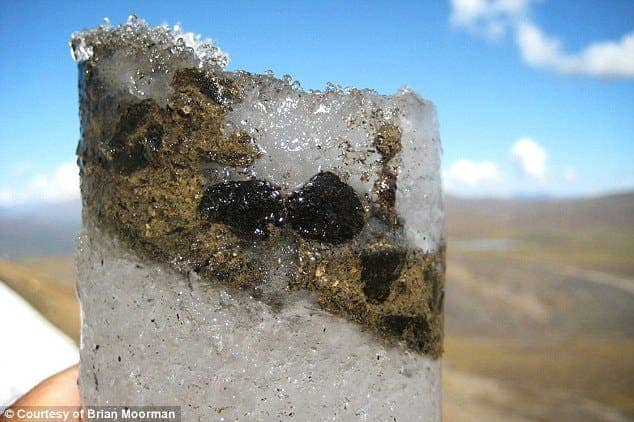Scientists have resurrected a 700 year old virus form Canadian permafrost and showed that even after several centuries of lumbering, viruses can remain… well. virulent. This could have significant implications, because as global warming continues melt more and more permafrost, unknown viruses could be released into the environment – and there’s currently no way of telling what the effects will be on modern plants, animals, and (ultimately) humans.
The virus in case was eloquently named ancient caribou feces associated virus (aCFV); at least the name is very descriptive. The virus remained frozen in the Canadian permafrost, so its DNA was still in very good shape and was easily separated from that of the caribou. They proceeded to isolate the virus and see if it still has the ability to infect hosts – the selected host was a tobacco plant. Eric Delwart, a researcher at the Blood Systems Research Institute in San Francisco explains:
“We demonstrate that genetic material from ancient viruses associated with caribou fecal matter was cryogenically preserved for at least seven centuries and that the cloned DNA genome of one of these viruses replicated and spread systemically in an extant plant,” Delwart wrote in a study published in Proceedings of the National Academy of Sciences.
The theory Delwart had is that viruses can become active after being frozen for centuries, or even millennia. Earlier this year, French researchers found a 30,000 year old Russian virus that was frozen in permafrost and brought it back to life. They suspected that it can still be virulent, but they didn’t try it to see if it still “works”. Delwart did; aCFV infected a tobacco plant, but didn’t appear to cause any outward symptoms of disease, probably because the plant wasn’t the natural host of the virus. In order to prove that the plant is actually infected, the team sequenced the genomes of newly-grown leaves on the plant and was able to detect and isolate the virus affecting the plant, which was already multiplying. Which begs the question – why are we poking around, seeing if ancient viruses can still go viral? The answer: because this is a problem we might have to face sooner rather than later.
“As climate change accelerates the melting of arctic ice, it is possible that ancient viral particles and the associated nucleic acids could be released into the environment,” he wrote. “If such virions are infectious, their release could contribute to the diversity of circulating viruses.”
Experimenting with the virus allows us to better understand and prepare ourselves for the possible future reemergence of ancient viruses. For example, now we know that this virus can still infect hosts. We don’t know what it used to infect, if it can cause damage, but this does shed some light on what may be down the road for us as more ice melts.
Journal Reference: Terry Fei Fan Nga, Li-Fang Chenc, Yanchen Zhoua,b, Beth Shapirod, Mathias Stillerd, Peter D. Heintzmand, Arvind Varsanie,f,g, Nikola O. Kondova, Walt Wonga, Xutao Denga,b, Thomas D. Andrewsh, Brian J. Moormani, Thomas Meulendykj, Glen MacKayh, Robert L. Gilbertsonc, and Eric Delwart. Preservation of viral genomes in 700-y-old caribou feces from a subarctic ice patch. doi: 10.1073/pnas.1410429111










